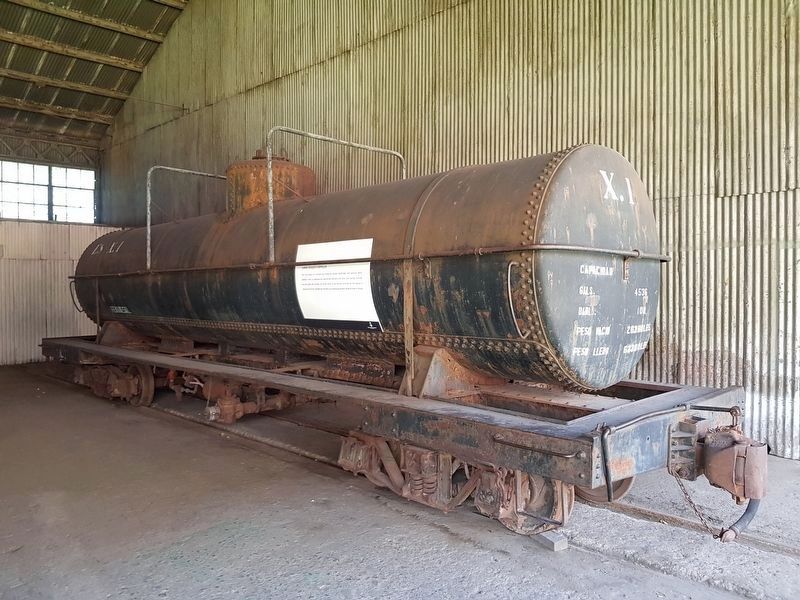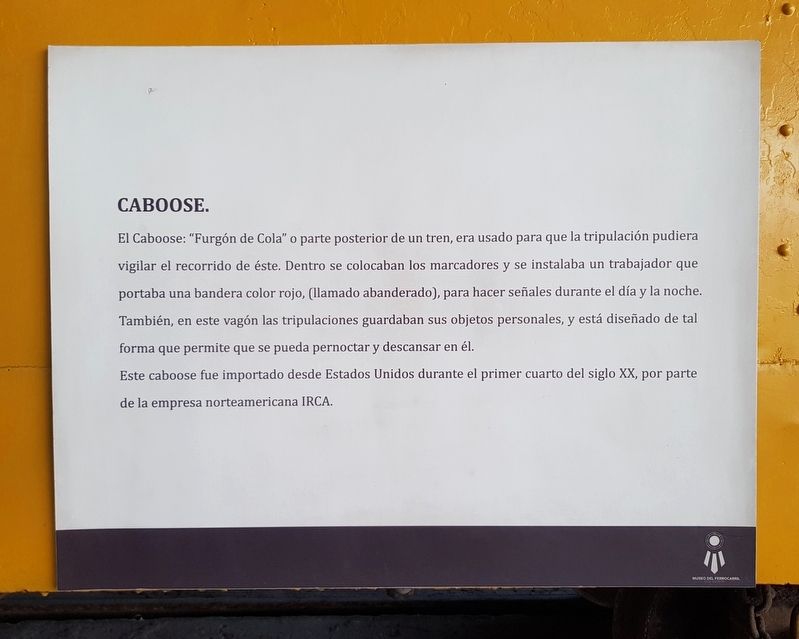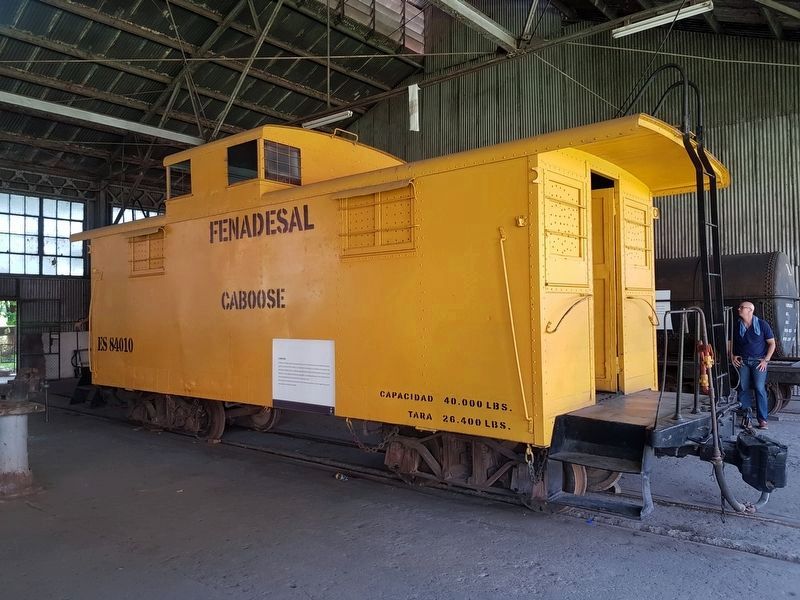San Salvador, El Salvador — Central America (West Coast)
Caboose
El Caboose: "Furgón de Cola" o parte posterior de un tren, era usado para que la tripulación pudiera vigilar el recorrido de éste. Dentro se colocaban los marcadores y se instalaba un trabajador que portaba una bandera color rojo, (llamado abanderado), para hacer señales durante el día y la noche. También, en este vagón las tripulaciones guardaban sus objetos personales, y está diseñado de tal forma que permite que se pueda pernoctar y descansar en él.
Este caboose fue importado desde Estados Unidos durante el primer cuarto del siglo XX, por parte de la empresa norteamericana IRCA.
Caboose
The Caboose, also known as the "last car" or the end of a train, was used so that the crew could monitor the train’s route while in motion. Inside were placed different signals and a worker who carried a red flag, (called the flag man), who was here in order to signal during the day or night. Also, in this car the crews kept their personal belongings, and it is designed in such a way that it allows them to spend the night and rest in it.
This caboose was imported from the United States during the first quarter of the 20th century by the American company IRCA (International Railways of Central America).
Erected by Museo del Ferrocarril de El Salvador.
Topics. This historical marker is listed in these topic lists: Industry & Commerce • Railroads & Streetcars. A significant historical year for this entry is 1912.
Location. 13° 42.109′ N, 89° 10.617′ W. Marker is in San Salvador. Marker can be reached from Avenida Peralta west of Bulevar Venezuela, on the right when traveling west. The marker is on the grounds of the El Salvador Train Museum (Museo del Tren de El Salvador). A small admission fee is required. Touch for map. Marker is in this post office area: San Salvador 01101, El Salvador. Touch for directions.
Other nearby markers. At least 8 other markers are within walking distance of this marker. Second Class Railcar (here, next to this marker); Maintenance and Personnel (within shouting distance of this marker); Steam Crane (within shouting distance of this marker); The Cuscatlán Car or Presidential Wagon (within shouting distance of this marker); El Niño Canillón (The Tall Boy) (within shouting distance of this marker); The 800s Locomotives (about 150 meters away, measured in a direct line); Dr. José Matías Delgado (approx. 1.3 kilometers away); El Rosario Church (approx. 1.4 kilometers away). Touch for a list and map of all markers in San Salvador.

Photographed By J. Makali Bruton, July 14, 2019
3. A nearby tank car and marker
Este carro tanque era utilizado para trasportar líquidos industriales como gasolina, diésel, petróleo y cebo. La capacidad de carga de este vehículo es de ciento ocho barriles, teniendo una tara (peso del vehículo) de 26.260 libras. En los últimos recorridos de este tanque se transportó fuel-oil o petróleo que utilizaba una empresa generadora de electricidad en Nejapa.
Tank Car or Zepellin
This tank car was used to transport industrial liquids such as gasoline, diesel, oil and greases. The load capacity of this vehicle is one hundred and eight barrels, with a tare (vehicle weight) of 26,260 pounds. The last routes of this tank car were for transporting fuel oil to an electricity generating company in Nejapa.
Credits. This page was last revised on March 20, 2024. It was originally submitted on August 19, 2019, by J. Makali Bruton of Accra, Ghana. This page has been viewed 225 times since then and 14 times this year. Photos: 1, 2, 3. submitted on August 19, 2019, by J. Makali Bruton of Accra, Ghana.

